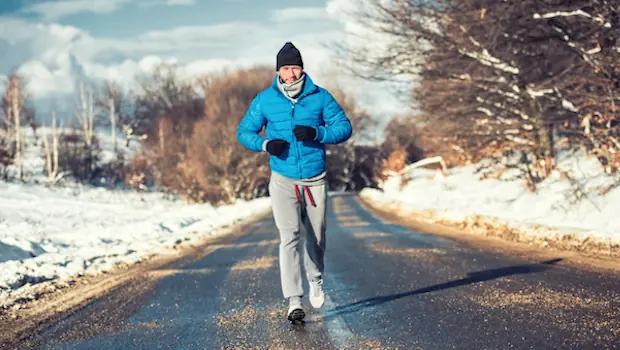
Almost everyone can work out safely in cold weather.
In fact, scientists have suggested no temperature is too low to exercise outdoors as long as you suit up to minimize cold-weather risks. And though it's obvious that high-intensity workouts—like boot camp training or running—are better choices for staying warm than, say, yoga, your body will work to maintain a core temp of 98.6 degrees no matter what you're doing.
"I still remember working out in 9 degrees," says Anthony Burdi, co-founder of The Rise, a year-round outdoor workout group based in New York. "Afterward we said, 'I can't believe what we just did!' But it's not as bad as you think."
Exercising outdoors when the temperature drops below freezing does come with annoyances. But that runny nose is a good sign. The inside of the nose moistens to humidify the air we inhale, and the excess fluids creep out our nostrils.
As for that icy air hitting your lungs? It's basically impossible for freezing air to damage your lungs. Try wearing a scarf and keep layers on your chest to feel warmer as you inhale.
There are a few groups of people who should be cautious before trekking outdoors for a mid-winter run.
If you have asthma, the cold, dry air can trigger lung tightness and asthma attacks while exercising. And if you've been diagnosed with poor blood circulation or heart problems, it's best to check with your doc first before hitting the frozen pavement.
1. Negative Windchill
"Extreme wind chill can make it unsafe—even if you dress warmly," says Lipi Roy, M.D., an internist at Massachusetts General Hospital and instructor at Harvard Medical School.
As a general rule, if it's warmer than five degrees (F), your chances of frostbite are low, Roy says. But when the windchill brings temps down to below -15 degrees, exposed skin can get frostbitten in less than 30 minutes.
Translation: The treadmill is calling your name.
2. Know the Warning Signs
The first sign of frostbite is numbness, followed by a tingling or burning sensation. If you suspect frostbite, head back inside and warm the area gradually by running it under lukewarm water or wrapping it in a warm blanket, Roy says.
While you can treat superficial frostbite at home, hypothermia is a true medical emergency. If anyone you're working out with has slurred speech, intense shivering, or a loss of coordination, get to a hospital stat.
3. Wear Synthetic Fabrics, Fleece and Wool
"The first layer should be synthetic—something that will wick moisture away from your skin," Roy says.
The second layer should be fleece or wool to help insulate, and the third should be a breathable, waterproof layer to help repel wind. Avoid cotton: It loses its insulating power when we become sweaty.
"The one thing I'm always really adamant about is having something dry to change into," says Chris Lopez, another member of The Rise. "When the workout is over, you don't want to be stuck in wet, sweaty clothes when it's 30 degrees outside."



